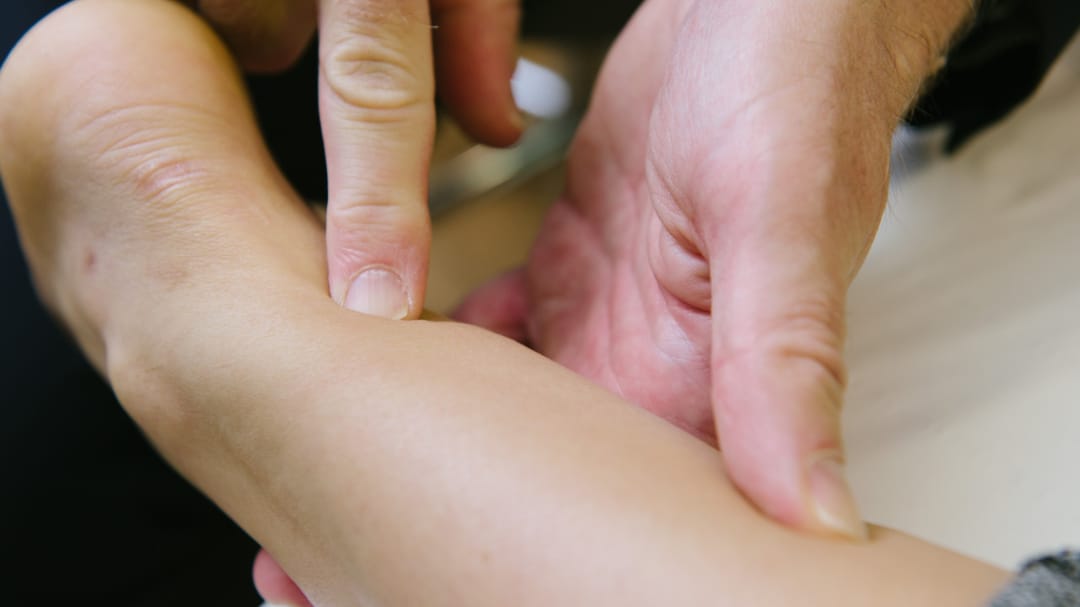The Misconceptions of Pain: Understanding Pain Beyond Injury

Claire Small
Chief Clinical Officer & Consultant Physiotherapist
- 1 October, 2020
- Pain Management
- 5 min read
The Misconceptions of Pain: Understanding Pain Beyond Injury

It is easy to think of pain as a simple mechanism that helps to keep us safe when tissues in our body are damaged from an injury.
Here is a familiar example of an injury we have all likely experienced, stubbing your toe.
This action sends signals all the way from the point of contact at the toe, up your leg to your spinal cord. Before it has even arrived in the brain, a spinal reflex retracts your foot and leg from the source of stubbing.
As the signal continues up your spinal cord to the brain, you begin to grab your toe, grimace and scream out in pain – possibly including an obscenity – in the direction of whichever inanimate object is to blame for your injury (and perhaps at whoever has left it where it shouldn’t have been!).
All this is happening whilst your body is kept alive through the various automatic processes such as breathing and pumping blood through your body; which now includes pumping more blood than normal to the toe in order to start the healing process.
Pretty impressive stuff, right?
Now for the confusing part, the signal travelling from the site of injury is not strictly a pain signal. It is called a nociceptive signal, or nociception. It is better to think of this signal as a ‘danger message’. It is then the job of the brain to interpret these ‘danger messages’ alongside all of the other messages it is receiving simultaneously! And you thought your ‘To Do list’ was long…
If the brain determines that these danger messages require action to keep us safe from harm (e.g. putting pressure on the affected area, tensing or recoiling) then our brain can ‘decide’ to produce the feeling of pain that prompts us to appropriately respond. In our stubbing-the-toe example it usually looks a little something like, grabbing your foot, shouting and limping around for a few days whilst the healing process takes place.
Here’s another example; if we have sprained our back and we bend down to put on our socks, the affected tissues in the back sends ‘danger signals’ to our brain which are interpreted as ‘painful’ by the brain so as to warn us to be cautious of this movement.
But what if, later in that same day, your young child was sitting on the floor next to you in the park, and a football was flying through the air towards their head? In that split second, your brain may ‘decide’ to override the danger messages to move the child or perhaps even intercept the ball, with all the class and style of a Sunday league football veteran with a hangover.
If you are to make contact with the ball, a pain response may be triggered within you, but at least the child is safe. This example helps us to see how the context of a situation is hugely important in determining how we experience pain.
We use the term ‘decide’ metaphorically here. Our brain is not a separate person making decisions, it is a network of nerve cells, chemicals and synapses that have been hardwired to function in a specific way over millions of years of evolution via natural selection.
Our mind is the flow of subjective experiences and feelings that happen as a result of the way that our brains function, and pain is one of those experiences. Others include anger, love and pleasure. We are far from fully understanding the complexity of these experiences and how they occur; the brain-mind connection is the great unknown!
But we are confident in our current knowledge, that pain can exist in the absence of tissue damage. Put another way, we can experience pain without an injury; without stubbing our toe or injuring our back bending to save the child.
This may seem odd at first, but consider this, brain freeze from an ice cream straight from the freezer is not causing any damage… but it sure hurts! Why does this happen?
Losing a loved one does not cause a specific injury to our body but can still cause unimaginable pain. These are all very real experiences of pain, but neither require tissue damage to trigger the pain.
Pain is an experience based on our brains best guess at keeping us safe from harm.
As we have alluded to, this experience is not always accurate. Pain can be triggered in the absence of tissue damage and can even persist beyond the point that tissue healing is complete. This is a frustrating experience for many people and is a common cause for persistent pain.
Common signs of this might be that your pain has lasted beyond what would be expected for tissue healing to have occurred. Another is that pain can be influenced by our emotions or by the environment we are in.
Some people may describe their pain as getting worse when they are stressed, or that even the thought bending forwards can trigger pain. Perhaps even being in certain places, a smell or even the memory of an incident can also be a trigger.
Even our immune system can be activated by our thoughts and feelings. One experiment showed that just worrying about catastrophic pain and injury can generate an inflammatory response in our bodies. We know that when our body is inflamed, it can affect our mood, energy levels and can make us more sensitive to pain.
What should also be noted is that pain tolerance and thresholds are highly variable between different people and, as previously mentioned, pain is also variable within the same person depending on elements such as the context of their environment, their mood and who they are with – to name a few.
What we hope this blog offers is an alternative view on pain. It is not as simple as you may have thought, but it is always a very real experience that should be discussed openly and honestly to help figure out the potentially complicated factors that might be contributing to your pain. Working together with an expert in pain to design a management plan will help you take control of your pain and start on the road to recovery.
Maybe you have even had therapy before, that was aimed at treating a specific tissue, but sadly hasn’t worked. It is very common that the pain you experience will feel like it is in a very specific part of your body.
Often, treatments targeted at this area can help with pain, but only in the short term. But as I hope you will have learned from this blog, it can also be more complicated than that. A more long-term resolution to pain should consider multiple factors: the surrounding structures of your body, your lifestyle, your mood, your overall health and wellbeing.
If there isn’t one specific tissue to blame, treatment should be different. You should not be treated as if you are defined by your injury, treatment should be focused on you as a whole person!
If this alternative way of thinking about pain has connected with your experience, then contact us at Pure Sports Medicine to speak with a pain specialist.
You should not have to suffer alone; we are here to help.

Advice
Over the last 20+ years our experts have helped more than 100,000 patients, but we don’t stop there. We also like to share our knowledge and insight to help people lead healthier lives, and here you will find our extensive library of advice on a variety of topics to help you do the same.
OUR ADVICE HUBS See all Advice Hubs

